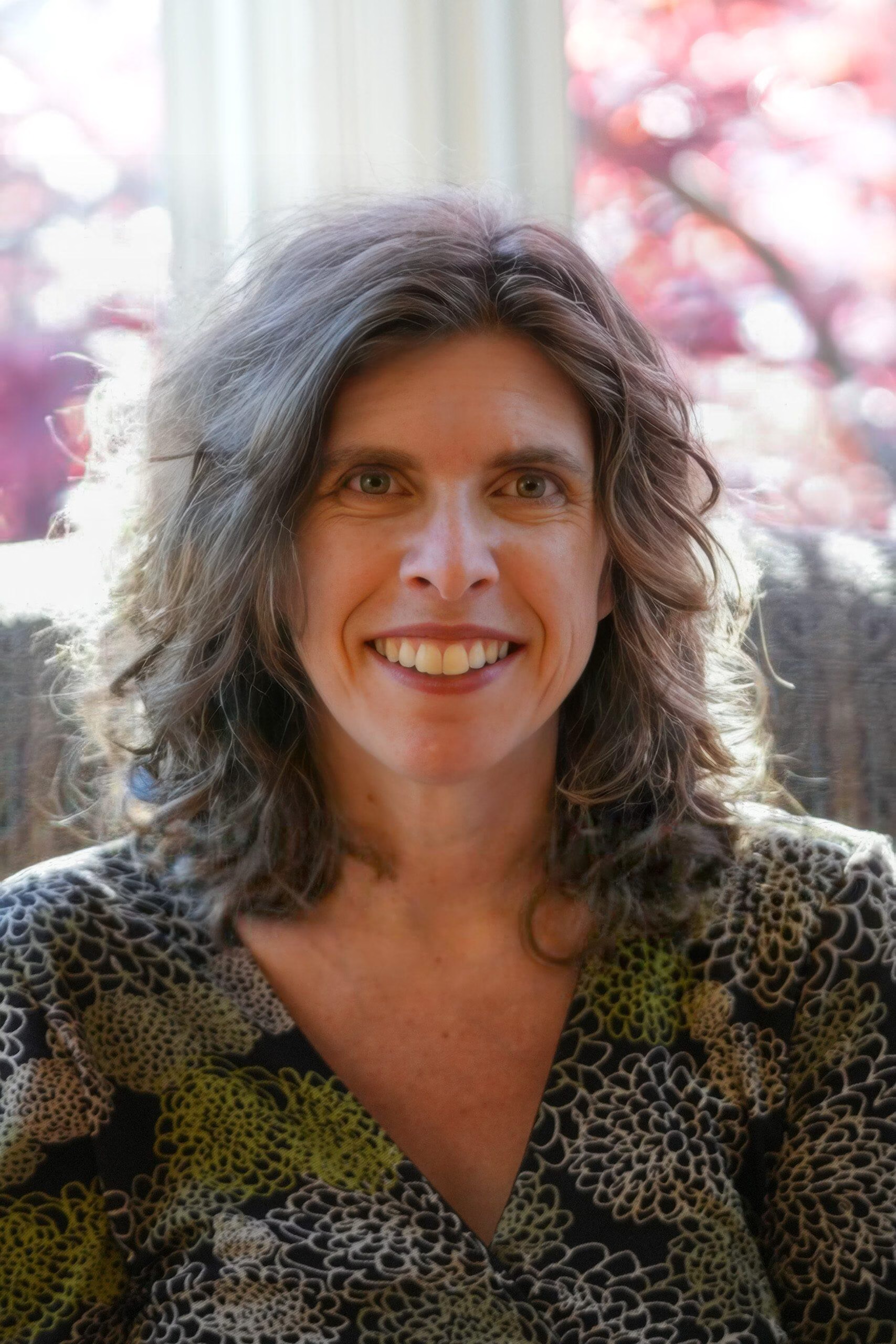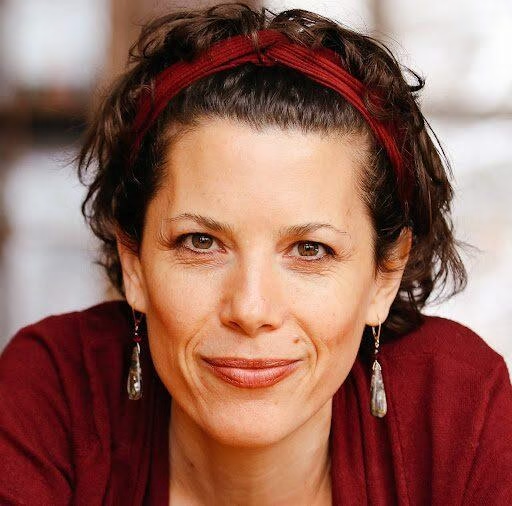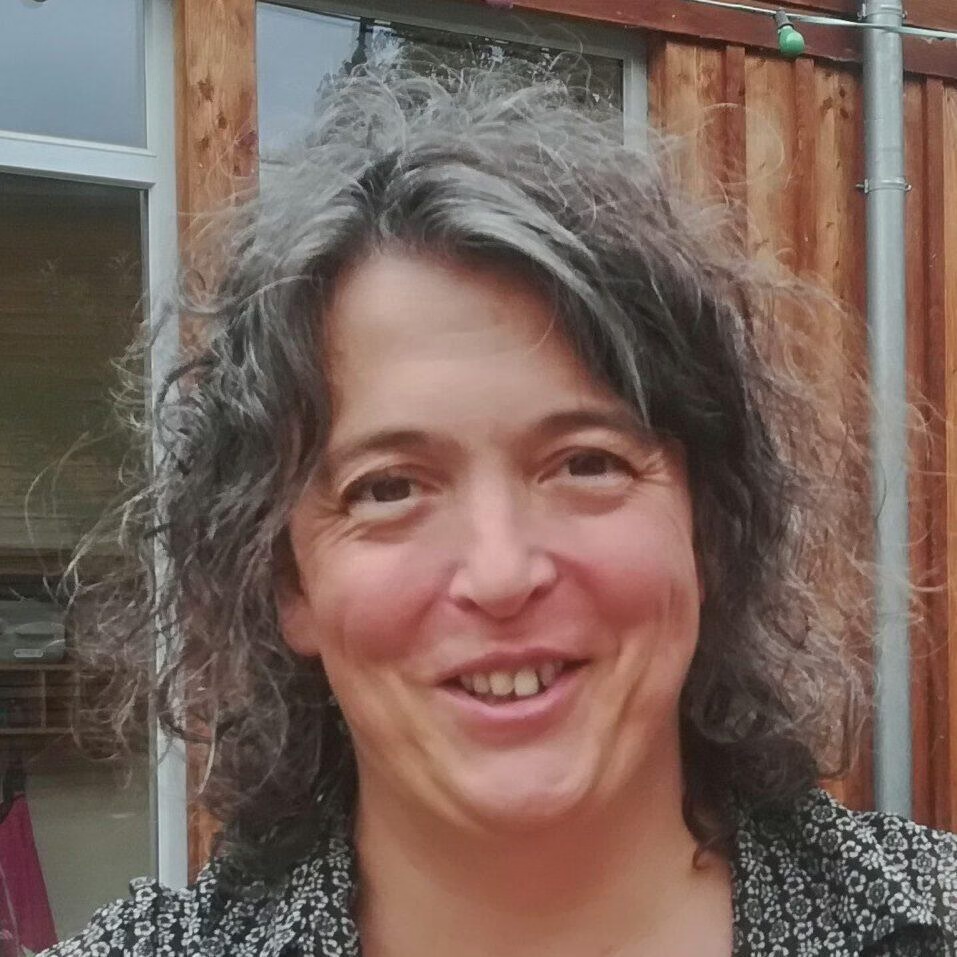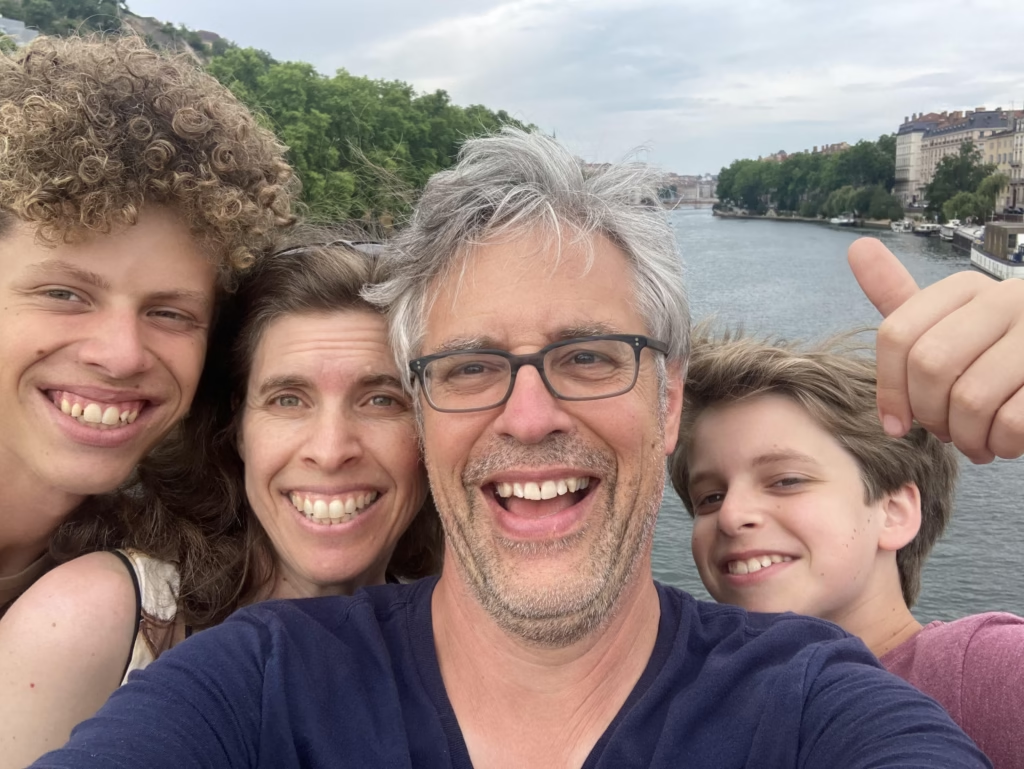Family
Conflict
Transformation
I created this offering for families who are suffering—sometimes from morning until night—with multiple conflicts with multiple family members—kids, parents, and sometimes even grandparents.
This scenario creates a tangled conflictual web where the more each family member pulls away to escape the pain, or digs in deeper out of reactivity, the tighter the knots become and the harder they are to untie.
Often the tangles are so thick that it feels like the only option is to cut each other off. With kids, this can look like not listening to you, not sharing what’s going on for them, hiding out in their room or on their devices, and sneaking around when what you most want is an intimate and trust-filled relationship.
When you’re inside the web, it’s almost impossible to untangle yourself. An outside set of eyes, hands, and heart are what is needed.

I see myself as a conflict repair mechanic

I am here to pinpoint and unravel the underlying patterns of entanglement, so we can begin to untie the knots of conflict and transform the family dynamic to one of connection and trust.
My job is to help you repair the ruptures that you’re afraid will scar your children for life and equip you with the tools you need to effectively navigate the conflicts that are sure to arise in the future.

Family Conflict Transformation is a series of coaching sessions where I work with your family in various constellations (individually, parents, parents and children, or children on their own and with each other) for between 1-3 hours at a time.

Dara Friedman
Ottawa, Canada
“I’ve noticed that I can do some things – say some things to my family – that I previously didn’t have the courage or felt the permission to say."
“This is really huge for me. I had been stuck not saying these things for almost my whole life!!!! Can you imagine? (If you’re here reading this, maybe you can….) Not to say that I’m exactly where I want to be right now, but it’s a start and I’m grateful for that.”
We will pick days and times that work with your impossibly busy schedule.
I am available for asynchronous support between sessions. Who can solve things in an hour? Conflict is unpredictable, so coaching needs to be flexible.
- You can reach me via text and email in between sessions.
- You can also reach me by phone for spot coaching as necessary.
Typically our work is done in 10 – 20 hours over a 3 – 6 month period. My goal is to help you resolve your conflicts, not keep you as a client in perpetuity.
That said, I always like to check in 3 months after our last session to see if the family agreements we’ve made are sticking, and troubleshoot where needed.

Susan Peirce Thompson, PhD
Rochester, New York
“Parenting feels joyful and
doable again!”
“Parenting feels joyful and doable again!”
“I’m busy, so I always hesitate to add new things. But I needed help with mothering, so I took the plunge. I would absolutely recommend working with Lisa! She’s a life saver when parenting gets tough. It means the world to know someone has your back and can help you navigate challenges. Parenting feels joyful and doable again! I love how practical her help is. How flexible and available she is. And how she’s been able to work with each of my kids–and me–during some of our roughest times. I feel confident knowing I have somewhere to turn for help when parenting teenagers feels overwhelming. We are still making it through–one day at a time–but I have a more collaborative approach with my kids now and that is working out well.”

How It Works
The Conflict Prevention & Repair Pyramid is my proven methodology for transforming family conflicts. By following these steps in a specific order, we embark on your journey toward resolution and growth.

Step 1: Map The Gap (Between Your Conflicts & Your Vision)
Typically, when families first come to me in a state of conflict, their initial instinct is to create new rules. While forging new agreements is a step in the process, it is actually the very last one. In the beginning, there is not enough information or trust for that… yet. They just won’t stick.
Our first priority is to Map The Gap between the conflict you’re experiencing and your vision for your family. We start with a conflict inventory, which is a catalog of everything that is happening in the day, week, month, and year that is leaving you irritated, miserable, or fuming.
Then, we get clear on your vision—what you want for your family, your child, and yourself—as well as what the rest of your family’s vision is. As we plan our work together, we will make sure that every step we take is moving in the direction of these visions.
In the early stages, families often want to charge ahead in ways that seem efficient and logical, but are ultimately driven by underlying mistrust. Once we hold these strategies up to our true vision of where we want to go, we recognize that a different path that might require more time and courage is actually more aligned with our desires.
Vision is inherently motivating. It gives us the bravery to pursue the aligned action. This is why it’s essential to take inventory and map out the terrain before we move forward.
Once we go through this first step of the process, I can immediately see what’s possible for you and your family. The great news is, at this point, there are usually quick wins that will alleviate major stressors right away, without needing to wait for the second session to start implementing.
For example, one mother I worked with was at her wits’ end because her five-year-old refused to wash his hands—which were covered with germs after his day at preschool—before touching the toddler. She was so sleep-deprived, overwhelmed, and enmeshed in the conflict that it hadn’t occurred to her that she could simply squirt his hands with some anti-bacterial gel before she released his car seat buckle. All of a sudden, life was easier.

Vanda Perez Bessone
Cologne, Germany
“By the end of the first session, I already had a personal compass and a deep sense of companionship that I didn’t need to be ‘alone on the road’ again."
“Prior to meeting Lisa, encountering a family conflict was like driving at night under heavy rain. I didn’t know exactly where I was going, or how to take the steep curves. I was constantly scared of completely ‘losing control’ of the car.”
Step 2: Solidify A Conflict Navigation System
Conflicts are inevitable, and everyone needs a method to handle them effectively. Most people unknowingly rely on approaches they’ve inherited—usually being police officers or pushovers—neither of which they like or actually work. My approach offers a third way—one built on collaboration with the intent of leaving no one behind.
I’ve developed a highly effective methodology, even for those new to finding collaborative solutions. We’ll begin by working through a relatively simple conflict. The learning process is organic and intuitive, much like how children pick up a new language.
First, I’ll help you identify the core issue driving the conflict and offer deep empathy so that you feel fully understood. I’ll step into your role, place you in your child’s position, and use my system to resolve the conflict, explaining each step as we go. Afterward, we’ll switch roles, giving you the opportunity to practice the methodology yourself, boosting your confidence as you’ve already seen it in action.
This method equips you with a conflict resolution system that’s rooted in empathy and collaboration, empowering you to handle disputes in a way that aligns with your values.
“She points me towards reframing a fixed viewpoint…”
“I would recommend Lisa for her ability to see the challenge, help me identify the missing needs, and gently question the stories that are created and the strategies used. She points me towards reframing a fixed viewpoint which then helps with finding a more creative response and solution to the problem.”
Anon
England
“Lisa gets right to the work.”
“Lisa gets right to the work, bringing to the forefront things that I am missing and the way she brings these things forward is clear, concise and easily applicable.”
Randi S.
Sebastopol, CA
Step 3: Integrate Inner Conflicts (that fuel external ones)
After resolving a few external conflicts, we often hit a point where certain patterns feel stuck. This is usually when something from your past is interfering with your ability to effectively use the system. For instance, you may notice that your reactions to your child mirror the way your father lost his temper with you. To truly resolve the conflict, we need to address its root cause.
Together, we’ll explore what’s going on beneath the surface. I’ll help you uncover the deeper reasons behind behaviors you know aren’t helpful but feel hard to change. Often, it’s an internal conflict—an old narrative, belief, or story—that fuels the external tension.
Once we identify this, you can transform that limiting belief, freeing you to prevent future conflicts. The goal is for you to approach situations with full awareness, presence, and an open heart, so you can respond in ways that align with your true self.
“Lisa is 100% non-judgmental.”
“I can tell her about the crazy, mean, embarrassing, icky beliefs I have about myself or others and it’s like she’s heard it a million times – she’s totally unfazed. Instead, she validates, by pointing out why I might have a particular belief, and actually encourages me to bring it fully into the light. In doing so, we’re able to really examine, interrogate, and come to understand it and its role in my relationships.”
Dara Friedman
Ottawa, Canada
Step 4: Repair Ruptures
Now it’s time to repair the ruptures. True repair can only happen once you fully recognize your own role in the conflict. While the other person has likely contributed too, it’s now possible for you to approach the repair process with a sense of calm, gentleness, and curiosity. It’s remarkable how quickly healing can occur from this place of compassion—for both yourself and the other person.
Forgiveness naturally follows, and everything becomes softer and easier from there. Conflicts that once felt stuck are less frequent, and when they do arise, you’ll know exactly how to handle them without carrying unresolved issues forward.
“...closer to being the mama I knew I could be!”
“I’ve worked with a few other parenting coaches and therapists and wasn’t sure if this was going to be more of the same where I don’t really see results for the investment. But Lisa has a way of getting down to the root of the hard stuff efficiently and effectively. I’ve had so many epiphanies and started changing my automatic reactions which is finally making me feel more connected to my family and closer to being the mama I knew I could be.”
Anon
Oregon
Step 5: Forge New Agreements
Now, for the moment we’ve all been waiting for—creating new agreements. Often these are surprisingly simple, yet powerful, shifts. For example, a parent might commit to always sharing sensitive information, even if they fear it may upset their child. This kind of agreement becomes possible only after addressing the internal belief that prompting fear in a child makes someone a “bad” parent. Once that inner conflict is resolved, these new commitments are much easier to honor.
We conclude with a family meeting where we collaboratively craft agreements that integrate everything you’ve learned. These agreements help prevent slipping back into old patterns and serve as a celebration of how far you’ve come. Displaying them as a visible reminder, like on the refrigerator, reinforces the progress and keeps the family aligned moving forward.
“She is like a magician who serves people of all ages.”
“I would recommend Lisa because she is like a magician who serves people of all ages. She is happy to share all the secrets of her art SO anyone can learn to do the magic. I am learning to do things I so much wanted to be able to do.”
Vanda Perez Bessone
Cologne, Germany
Investment
“The only hesitation I had to start with was the remuneration for the professional services as it came across to me as high. I’m glad I have overcome this view and engaged with Lisa.”
Anon
London, England
About Your Coach

Hi. I’m Lisa.
I’ve spent the last two decades learning, practicing, and teaching hundreds of parents how to prevent family conflicts. I started doing this work because I decided that I wouldn’t have kids until I had tools to do things differently than my (well-intentioned and loving) parents did. I have two kids.
Parents usually feel judged by their kids, their partners, their in-laws, other parents, and (the harshest critics of all) themselves. I see what every family member does through a judgment-free lens, which results in robust, compassionate conflict transformation.
I majored in Chinese in college, produced a podcast at a food truck park, and perform monologues like Date Night at Pet Emergency and the Mommy Meltdown Show. I also love square dancing and tandem pedal kayaks.
You’ve probably noticed that I don’t have any letters after my name. That’s because the skills you need to prevent conflicts and repair ruptures don’t require a degree in mental health. They’re accessible to everyone. My clients and I are living proof of that.
If this sounds like what you’re looking for, let’s have an initial 30-minute chat to see if it’s a good fit!